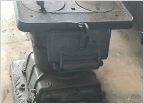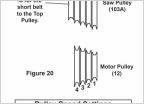-
Welcome to Tacoma World!
You are currently viewing as a guest! To get full-access, you need to register for a FREE account.
As a registered member, you’ll be able to:- Participate in all Tacoma discussion topics
- Communicate privately with other Tacoma owners from around the world
- Post your own photos in our Members Gallery
- Access all special features of the site
Grass in Colorado (or just Kentucky Bluegrass in general)
Discussion in 'Garage / Workshop' started by Boyk1182, May 19, 2020.
Page 1 of 6
Page 1 of 6


 ISO: The right shop heater: Christmas gift
ISO: The right shop heater: Christmas gift 7/8" bore 4-step pulley... Unicorn?
7/8" bore 4-step pulley... Unicorn? Compressor Question
Compressor Question JIS Screwdriver Set Recommendations
JIS Screwdriver Set Recommendations Welding school to Graduation and stuff in between!
Welding school to Graduation and stuff in between!


